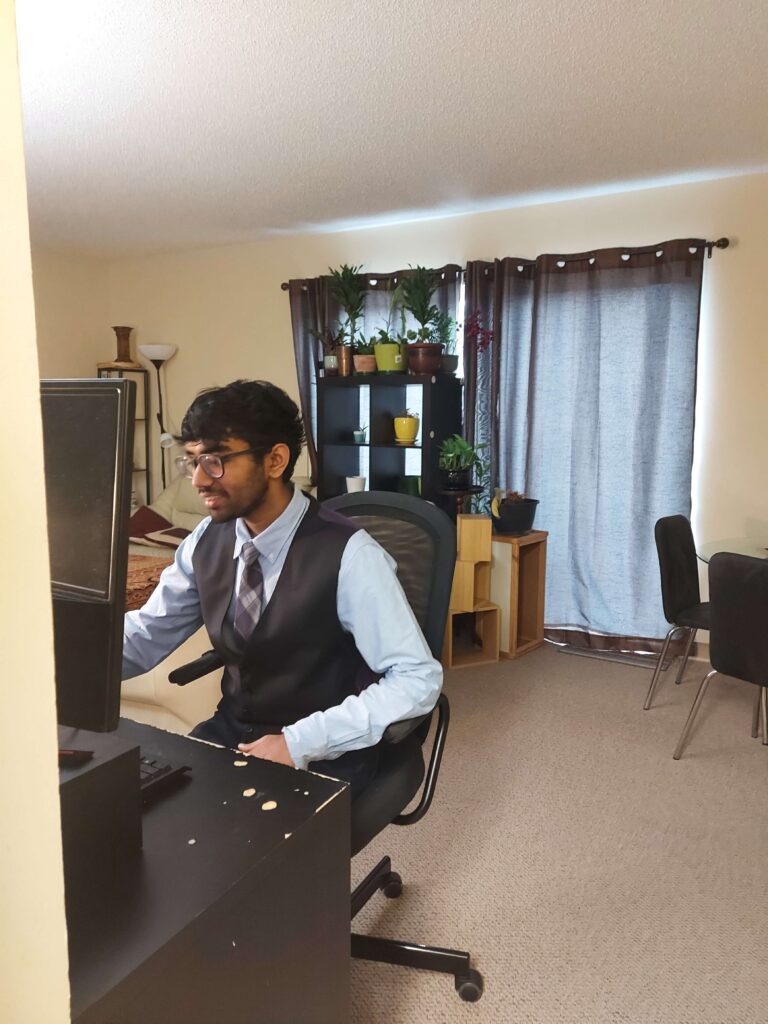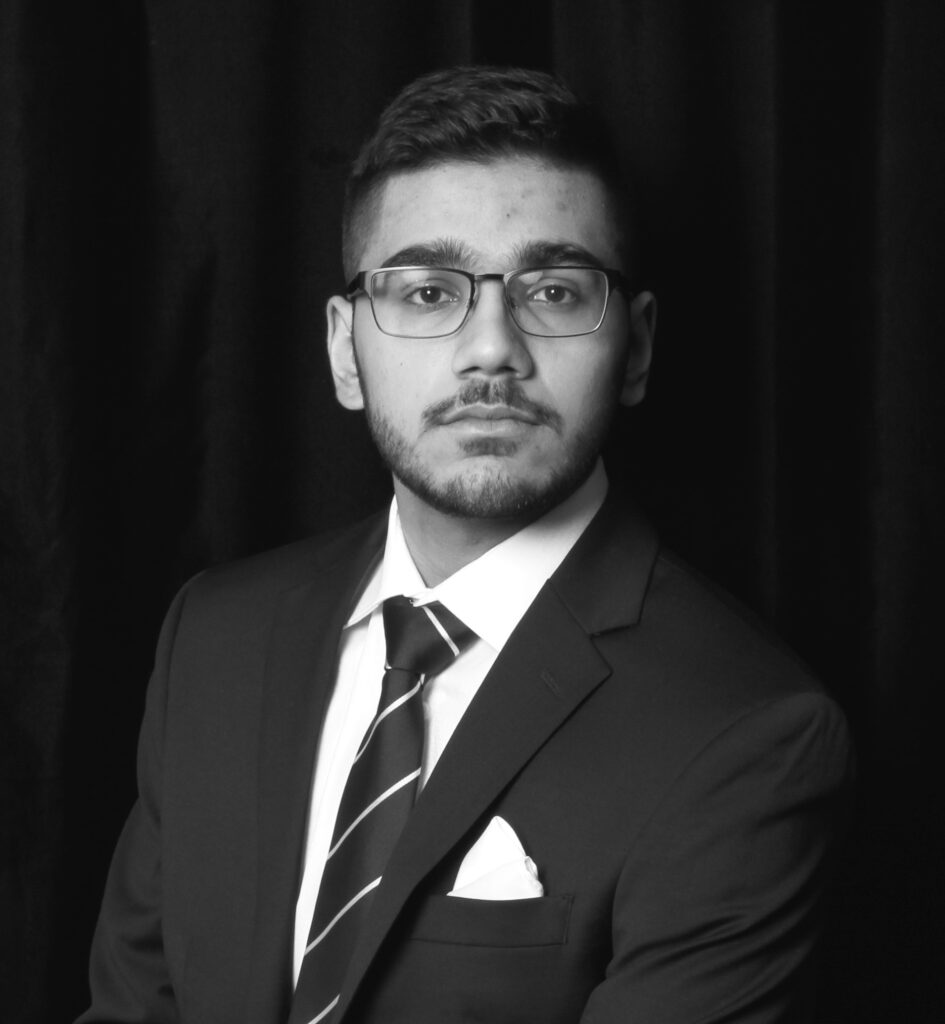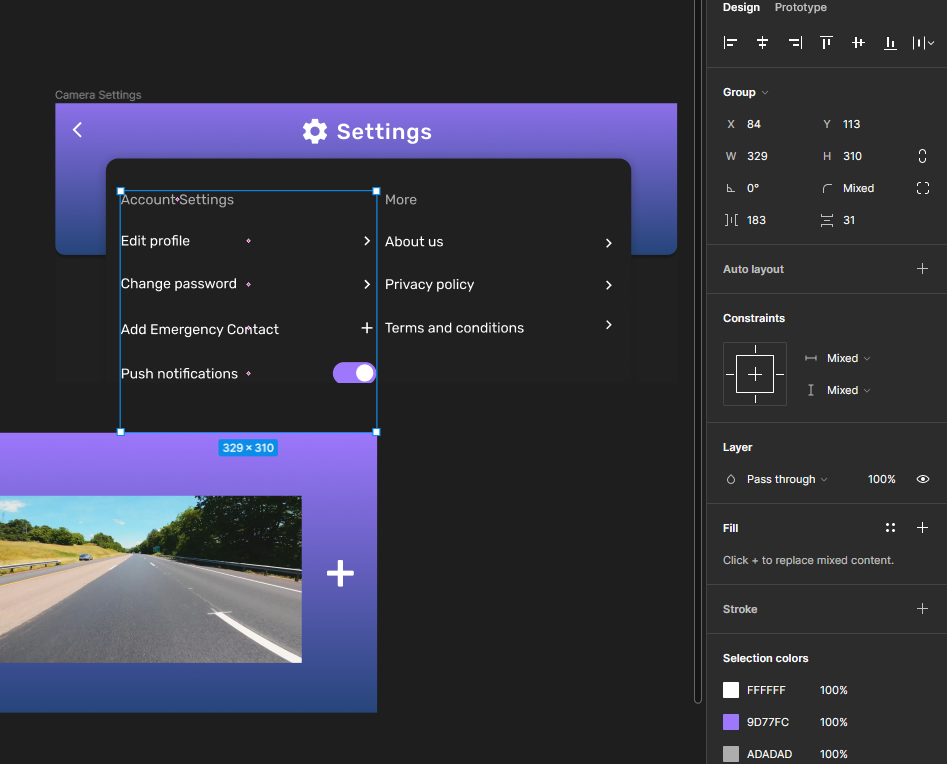Making Connections Today for Hackathons Tomorrow: How Azzam, Ethan, and Tayyib Placed Third in a Nationwide Samsung Competition

BEEDIE LUMINARIES TEAM–A couple of months ago, an email arrived in our general inbox just after lunchtime. Titled “Samsung Solve For Tomorrow Challenge”, it was hard to miss and certainly intriguing. Just below the subject, a short but joyous email followed:
“I am pleased to let you know that Azzam, Tayyib and I [Ethan] have won third place in the Samsung Solve For Tomorrow Challenge. On Behalf of the Team Beedie Bright, we would all say thank you for your help and support.”
A quick Google search let us know that Solve for Tomorrow, launched in 2010, is a nationwide contest that asks youth to use STEM learning and Samsung technology to solve real world problems that can have a positive impact in their communities. Still, eager to learn more, we reached out to our three Luminaries to ask about how they got there, what they learned, and where they want to go now.
Wait. Who are Azzam, Ethan, and Tayyib?
Great question. Good news for you, every good story begins with a good understanding of the characters involved. Here are some fun facts about the three of them:

Azzam is from Cohort 2020 and is currently studying Mechatronics System Engineering at Simon Fraser University with a certificate in Entrepreneurship and Innovation. He is driven by an interest in environmental sustainability, languages, embedded systems, and IoT.
Fun fact about Azzam: he can’t swim!
As a student of Chemistry and Statistics at the University of British Columbia, Ethan is pursuing a BSc with a minor in Economics. Ethan, from Cohort 2019, was inspired to pursue science because of his interest in Youtube/movies (he says he owes his passion to the creator MinutePhysics). In his professional experience, Ethan has experience with materials and analytical chemistry and quantum computing.
Fun fact about Ethan: he loves hiking and is a brown belt in Goju-Ryu and an orange belt in Shito-Ryu.


From Cohort 2020, Tayyib studies Computer Science at the University of British Columbia and has experience as a software engineer with companies such as TRULIOO and Korotu (a sustainable finance technology start up).
Fun fact about Tayyib: He loves taekwondo, 3D printers, embedded electronics and firmware.
So now we know them separately, but who are they together and how did they end up winning this challenge?
It’s one thing to know each other, but then what? Not all friends win a national Samsung contest together… To understand further, we asked them to break down the steps that led to their success:
As written by Azzam, Ethan, and Tayyib, these were their 5 identifiable milestones along the way:
- Assembling the Team
- Ideating Phase: Thinking, thinking… and more thinking
- Receiving the good news: Beedie Luminaries Style
- Chaos and Finals
- Grand Finale and Takeaways
Below, we break down each step in detail.
Assembling the Team
One unassuming day, Ethan and Azzam stumbled upon a random advertisement of the Samsung Solve for Tomorrow challenge. While it was no-brainer that they wanted to compete, the prospect of forming a complete team was where they faced the most difficulty.
At the time of the competition, Ethan and Azzam had known each other for roughly 2 years and were eagerly searching for a third partner to complete the team. Together, they turned to the Beedie Luminaries to seek interest, and that’s where Tayyib comes in to the story.
As a part of Cohort 2020, Tayyib and Azzam met in 2022 at a Night For Bright Minds. On the other hand, Tayyib and Ethan had surpassed one another at these events, but found each other at the Beedie Luminaries REAL (Relational & Emotional Agility Leadership) Retreat.
The pair asked Tayyib to join them and well, the rest is history!

Ideating Phase: Thinking, thinking… and more thinking
During Winter Break following the Fall Semester, the three of them spent nearly 4 hours every week meeting and brainstorming. As with most challenges that Ethan and Azzam had competed in together, the hardest part was identifying the solution and completing the ideation phase of the competition.
At the beginning, they had a number of ideas:
- Making an algorithm to simulate and optimize hospital waiting times
- Designing a wearable device for seniors health-tracking (i.e., detecting falls)
- Re-purposing Samsung vacuums to enable carbon capture
- Developing an affordable and sustainable dashcam kit
Quickly, it became apparent that the hardest part of this competition would be picking the best idea.
Together, the three of them spent hours throughout winter break brainstorming, compiling ideas, and checking the feasibility of each of these ideas. Having evaluated the above ideas based on feasibility, potential impact, and competitive advantage, they ultimately chose the idea of designing a dashcam.
They wanted to create a kit that would enable a user to repurpose an old Android phone as a dashcam, effectively upcycling the device and preventing it from entering the landfill. Furthermore, they explained that using Samsung technology and a possible Samsung partnership would enable them to bring more dash cams on the road without having to pay expensive fees. With this, they could target the sustainability problem of e-waste while also helping prevent the societal issues of car crashes and accidents.
The research was also there to support the case: studies done in the US have shown that dashcams can allow for safer driving. In one 2012 study done by Federal Motor Carrier Safety Administration (FMCSA), it was proven that in-vehicle monitoring systems (IVMS) assisted in a reduction of driving accidents by 37%). Coupled with the fact that British Columbians have the highest accident rates in all of Canada, this idea really hit-home.

Receiving the good news: Beedie Luminaries Style
The idea was fully formed and the initial proposal went in early January. Shortly after, life became busy again and all three of them had completely forgotten about the contest. The team was initially told to expect a response in early February, but when the week rolled around, they heard nothing. Despite their disappointment, they chose to move forward, thinking they had not moved on to the next round of the competition.
But on February 22nd, Azzam received great news indicating that they would be advancing to the next stage. Thrilled to share with his colleagues, Azzam chose to tell his teammates in a similar fashion to how they heard the news about the Beedie Luminaries Scholarship:
“Hey… I just heard back from Samsung. The email says that it was a really competitive year…”
And well, you know how the rest goes. Ethan and Tayyib were ecstatic to hear that they had advanced to the final round and received a prize for being amongst the top 5 finalists.

Chaos and Finals
For the final round, they had one month to work on the final video submission for the contest. Amidst a busy semester, the three of them worked to finish the project while sleep deprived, hungry, and stressed by our own doing. For Azzam and Tayyib who are of Islamic faith, The holy month of Ramadan had begun, which meant daily fasting and even worse sleep. Concurrent to this, Ethan was also involved in other competitions and found work-life balance quite difficult. Despite these roadblocks, they spent numerous nights on call ideating and working on our next steps. Overall, the three of them reflect on the experience as character-building.
As a final step, they created a Blender Model, a 3D CAD model on SolidWorks, a Figma UI/UX design for the app and a slideshow business presentation of how this product would be taken to market, how it would be manufactured, the STEM principles behind it and how they would engage the local community.






Grand Finale and Takeaways
The rest of it was an absolute whirlwind. Of course, they were pleasantly surprised to be informed that they had placed third in the contest, but they were mostly overjoyed to have even had the opportunity to participate and make it to the final round.
Following the experience, the three of them frequently had moments that had them thinking, “I wish I had known this before”. So below, the three Luminaries have compiled some of their learnings and advice they have so others can be inspired and enabled to be even more successful than they were.
Solve a real problem.
It’s crucial that you identify a problem that is prominent, relatively easy to solve, attainable, but at the same time one that will have resources and information that will help you quantify it. Oftentimes we found that we got stuck on solving problems that were too large, niche or had little to no easily accessible background information.
Tell a compelling and relatable story.
Storytelling is a critical and essential part of any pitch. Finding a case study or a user persona that is relatable and can invoke emotion or empathy from others unlocks a higher level of understanding and can set you apart from competitors.
For criteria based challenges, focus on the fundamental science and related disciplines that are relevant to your solution.
Hackathons and STEM/STEAM based challenges are often focused on a certain topic of interest. It could be environment, social good or equity focused. Staying on theme and being able to connect your personal experience and skills to the topic at hand will ensure that you feel comfortable answering questions and know what you are talking about.
Build a team with complementary skills that can work well together.
A strong team with a weak idea will be superior to a weak team with a strong idea. A strong team means having a healthy culture, similar expectations and complementary skills. Finding partnerships through personal networks such as the Beedie Luminaries community can enable you to identify future business partners or colleagues who will help advance your skills and career.
And finally, good luck! Until next time!
Congratulations again to these three Luminaries!
We are so excited to see what comes next for you all.
Meet Luminaries like Ethan, Tayyib, and Azzam here. #BeedieBright!
